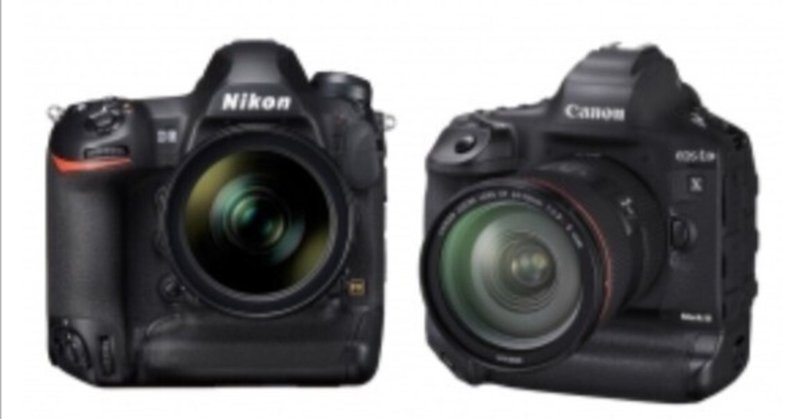
Crotch-splitting Nikon, tear-jerking Canon: Is this the beginning of the end for the SLR two-top?
2020.01.31 06:01
Last year, 2019, was a turbulent year in the history of the camera industry. Canon, the king of SLR cameras, clinging to its vested interests, and Nikon, known for its conservative, Mitsubishi-based corporate culture. The decline of the former two-top has become obvious to all, and the breakthrough of Sony, which took over the camera business of Konica Minolta, which was "ranked third for all years," was impressive.
Now, there have been several developments since the last article was written, so I would like to take a moment to recap them here.
On December 18, 2019, Canon was forced to correct the specifications it announced on October 24 of the same year regarding its next flagship EOS-1D X Mark III, an outdated SLR. The original announcement announced that the wireless transmission speed would be "more than twice" that of the current flagship EOS-1D X Mark II, but this was changed to "faster (link has been corrected in red). Canon has officially admitted that achieving "more than twice" the speed is impossible.
At CES, held in the U.S. from January 5, 2020, Nikon displayed the actual D6, its next flagship SLR camera, in an acrylic case. Since Nikon did not allow visitors to touch this actual model, there is a possibility that this was a piece of halibut.
On January 7, Nikon announced the February release of the AF-S NIKKOR 120-300mm f/2.8E FL ED SR VR telephoto zoom lens for full-frame SLR cameras. This lens will compete with Sony's FE 200-600mm f/5.6-6.3 G OSS super-telephoto zoom lens, which was introduced in this article last June. This Nikon lens has only half the focal length of the Sony lens on the telephoto side, but with a 2x teleconverter, it is equivalent to 600mm. Although attaching and detaching the teleconverter is a hassle.
On the same day, Canon announced that the next flagship SLR, the EOS-1D X Mark III, which it announced last October that it was under development, will be released in mid-February. Detailed specifications have been revealed, but the two critical weaknesses of the SLR that we pointed out in this article last year have not been overcome.
I told Canon Marketing Japan to improve the EOS-1D X Mark II when it was launched in 2016 with a sour taste in my mouth, but I am very disappointed; even though the two critical weaknesses have not been overcome, the performance has been improved in vain in points that don't matter.
The EOS-1D X Mark III is expected to retail for around 800,000 yen, but this does not change my view that Sony's full-frame mirrorless camera flagship, the α9 II, priced at less than 500,000 yen, is far more attractive.
The following types of people would dare to buy the "EOS-1D X Mark III" now in 2020.
those who have trouble learning how to use Sony's "α9 II
those who have some kind of "ties" with Canon.
If you do not fall into these two categories, you cannot find any rationale to buy the EOS-1D X Mark III when the α9 II is already available on the market, and Canon Europe's attempt to argue that SLRs have an advantage in this article sounds like a bitter excuse.
Nikon is even more distressed because last year it was crotchety when it said that it would make a solid product with both Z (mirrorless) and D (SLR) models. With the development of the D6 lagging behind that of the EOS-1D X Mark III, the introduction of a full-size mirrorless SLR flagship may not be ready in time for the 2020 Tokyo Olympics.
The camera market in 2020 has a tumultuous start. We will continue to monitor camera market trends closely.
first appearance : AGORA
この記事が気に入ったらサポートをしてみませんか?
